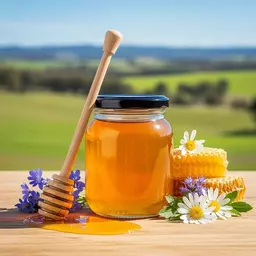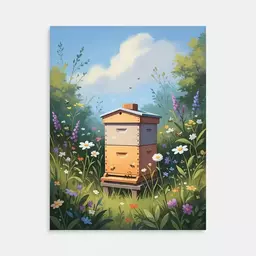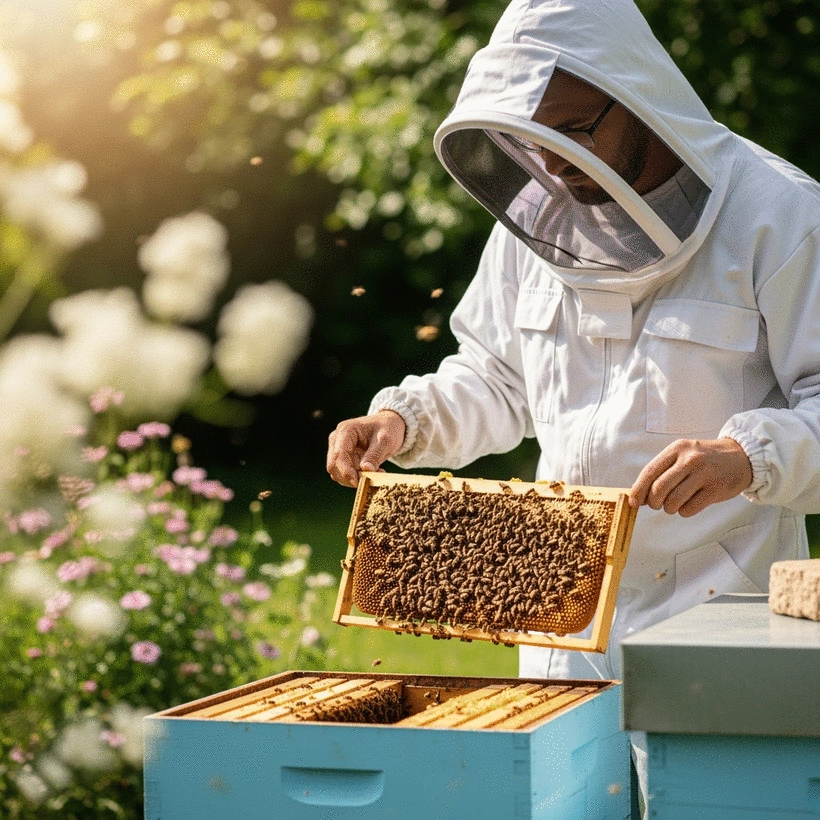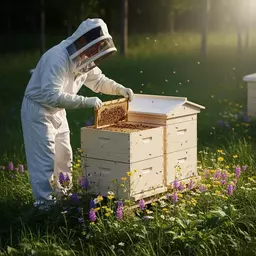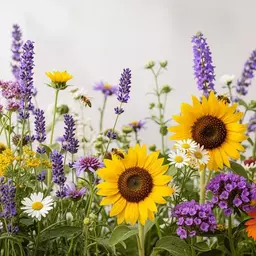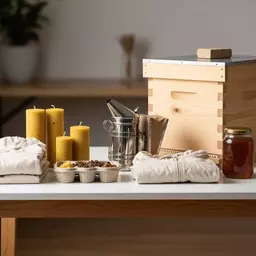Optimal Apiary Location and Conditions

The health of our ecosystems hinges on the delicate balance maintained by honey bees. Did you know that one-third of our food supply relies on these tiny pollinators? By understanding apiary design, we can create environments that not only support healthy bee colonies but also enhance their productivity. Let’s uncover key insights that will help you in your beekeeping journey.
What You Will Learn
- The importance of apiary location in influencing bee productivity and stress levels.
- Key environmental factors like soil quality and microclimate that affect bee health.
- Best practices for positioning hives to ensure access to sunlight and shelter from harsh conditions.
- The significance of continuous learning and community engagement in successful beekeeping.
Key Factors for Optimal Apiary Design
Creating a thriving environment for bees involves careful consideration of several interconnected factors, from site selection to ongoing management practices. The visual below highlights the essential elements for successful apiary design. For those just starting, our beginner's guide to honey bees provides a great foundation for understanding these concepts.
Site Selection Criteria
- ✓Good Drainage & Minimal Frost Risk
- ✓Morning Sun & Shelter from Wind
- ✓Access to Forage & Water
- ✗Avoid Agrochemical Contamination
Environmental Influences
- ●Soil Quality & Diverse Plant Growth
- ●Microclimate (Temp & Humidity)
- ●Pollinator-Friendly Flora Abundance
- ●Water Access & Hive Hydration
Beekeeper's Role
- ▸Continuous Learning & Adaptation
- ▸Engaging with Community & Sharing
- ▸Exploring Resources & Case Studies
- ▸Connecting with Local Associations
Impact on Bee Health
Effective apiary design directly leads to:
- ✔Reduced Colony Stress
- ✔Enhanced Productivity & Honey Yield
- ✔Stronger, Thriving Colonies
- ✔Sustainable Beekeeping Practices
Understanding Apiary Design and Its Importance for Bee Health
As an avid apiarist, I can’t stress enough how critical apiary design is for maintaining healthy bee colonies. The layout of your apiary goes beyond aesthetics; it plays a significant role in the overall well-being of your bees. By carefully considering the environment where your hives are situated, you can create a thriving habitat that supports their natural behaviors and health. Let’s dive into why the right location matters!
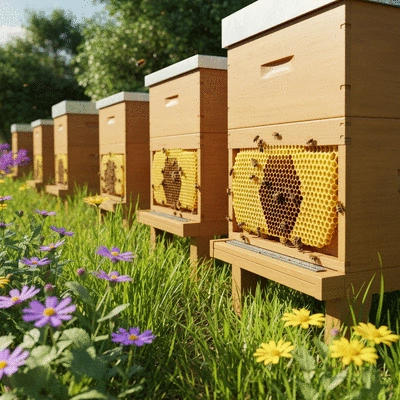
Why Apiary Location Matters for Healthy Bees
The location of your apiary directly influences your bees’ success. A well-chosen site can enhance bee productivity and reduce stress on the colonies. When selecting an apiary location, consider the following factors:
- Proximity to Forage: Bees need varied floral sources for nectar and pollen.
- Water Access: Clean water is vital for hive hydration.
- Sunlight and Shelter: Adequate sunlight and protection from harsh weather are crucial.
By keeping these criteria in mind, you can help your bees thrive, giving them the best chance to flourish in their environment! For more detailed guidance, check out our article on designing your first apiary layout.
Overview of Key Environmental Factors Affecting Bee Colonies
Several environmental factors significantly affect the health of bee colonies. Understanding these influences allows us to create the most supportive environments. Here are some key factors to consider:
- Soil Quality: Healthy soil contributes to the growth of diverse plants.
- Microclimate Conditions: Local variations in temperature and humidity can impact bee behavior.
- Pollinator-Friendly Flora: The presence of diverse plant species is essential for sustaining colonies.
It’s vital to recognize these environmental elements as they provide critical insights into how we can manage our apiaries effectively.
The Role of Soil Drainage and Microclimate in Apiary Design
Did you know that soil drainage can influence your bees' overall health? Poor drainage can lead to waterlogged areas, which may harm not only the plants but also the bees. Additionally, understanding microclimates can help you position your hives in areas that are warmer or cooler, depending on your local conditions. This awareness can enhance nectar flow and promote a healthier environment for our buzzing friends!
In my own experience with Nectar Network, I’ve found that taking the time to observe these factors can lead to astonishing improvements in bee health and honey production. Let’s make sure our bees have the best possible chance to thrive!
Pro Tip
Consider implementing companion planting in your apiary design. By strategically placing certain plants near your hives, you can attract beneficial insects and enhance pollination efficiency. For example, planting borage or clover near your hives can provide additional forage for your bees while benefiting the surrounding ecosystem!
Wrap-Up: Key Takeaways for Successful Apiary Design
As we wrap up our discussion on apiary design, it's essential to remember a few key factors that can significantly impact the health and productivity of your bee colonies. Selecting the right site is crucial, but so is understanding the environmental factors that come into play. With careful planning and consideration, we can create thriving habitats for our bees.
To summarize, here are some of the essentials we've covered regarding site selection and environmental influences:
- Choose a location with good drainage and minimal frost risk.
- Ensure your bees have access to morning sun and adequate shelter from harsh winds.
- Assess the availability of local forage sources and clean water access.
- Be mindful of agrochemical contamination in your area.
By keeping these points in mind, you'll be well on your way to developing an apiary that supports healthy and vibrant bee colonies!

The Importance of Continuous Learning and Adaptation in Beekeeping
Beekeeping is a journey of discovery, and as I have learned through my own experiences, staying adaptable is key. Each season brings new challenges and opportunities to learn more about our buzzing friends. By continually expanding our knowledge on best practices, we can better respond to the needs of our hives.
Staying engaged with the latest research, attending local workshops, and participating in community discussions can all help us become more effective beekeepers. Remember, every small change we make can lead to a healthier ecosystem for our bees!
Engaging with the Beekeeping Community for Further Insights
Encouragement to Share Experiences and Best Practices
I encourage you to reach out and connect with other beekeepers. Whether you're just starting or have been in the game for years, sharing our experiences can lead to valuable insights! Join local beekeeping clubs or online forums where you can exchange tips and practices. Together, we can strengthen our understanding of sustainable beekeeping.
Invitation to Explore Additional Resources and Case Studies
At Nectar Network, we are committed to providing resources that support our community. Be sure to explore our curated selection of articles, guides, and case studies that can deepen your understanding of various aspects of beekeeping. Knowledge is power, and the more we learn together, the better we can protect our bees! You might also find our guide on setting up a sustainable apiary particularly useful.
Connecting with Local Beekeeping Associations for Ongoing Education and Outreach
Lastly, I highly recommend connecting with your local beekeeping associations. These groups often host workshops, field days, and outreach programs that are not only educational but also a great way to meet fellow beekeepers. Engaging with these organizations can help you stay informed about local regulations and best practices, ensuring that your beekeeping journey remains rewarding and sustainable! To further enhance your understanding and connect with peers, consider exploring how to join your local beekeeping community.
Frequently Asked Questions about Apiary Design
- Q: Why is apiary design important for bee health?
- A: Apiary design is crucial because it directly impacts bee productivity, reduces colony stress, and contributes to the overall well-being and thriving of bee colonies by providing an optimal habitat.
- Q: What are the key factors to consider when choosing an apiary location?
- A: Key factors include proximity to diverse forage, access to clean water, adequate sunlight, shelter from harsh weather, good soil drainage, and minimal risk of agrochemical contamination.
- Q: How do environmental factors like soil quality and microclimate affect bees?
- A: Healthy soil promotes diverse plant growth, providing better forage. Microclimates (local temperature and humidity) influence bee behavior and can impact nectar flow, making hive placement important for bee comfort and productivity.
- Q: What role does a beekeeper play in successful apiary design?
- A: A beekeeper's role involves continuous learning, adapting to new challenges, engaging with the beekeeping community, and actively seeking resources and case studies to implement best practices for their apiary.
- Q: Why is continuous learning important in beekeeping?
- A: Beekeeping is dynamic; continuous learning and adaptation are essential to respond to new challenges, understand evolving best practices, and ensure the health and productivity of bee colonies.
Recap of Key Points
Here is a quick recap of the important points discussed in the article:
- Choose a location with good drainage and minimal frost risk.
- Ensure your bees have access to morning sun and adequate shelter from harsh winds.
- Assess the availability of local forage sources and clean water access.
- Be mindful of agrochemical contamination in your area.
